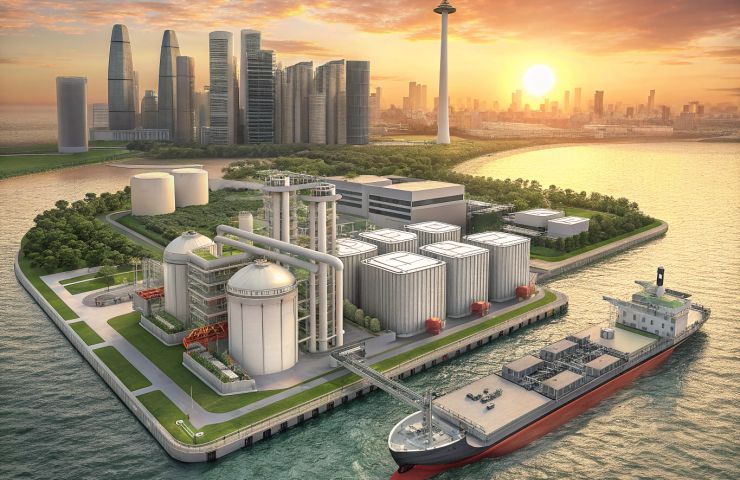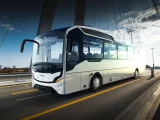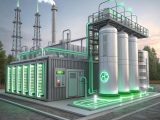
Green Hydrogen Production on Jurong Island Moves to Next Phase for Power and Marine Bunkering
October 8, 2025If you’re tracking the Asia-Pacific hydrogen space, you’ll want to pay attention here: Keppel Ltd., Advario, and Sumitomo Corporation have officially launched the next chapter of their green hydrogen project on Jurong Island. Announced on 1 October 2025, this effort is all about cranking up hydrogen production for power generation and maritime hydrogen bunkering, highlighting Singapore’s push to become a leader in the regional clean energy transition.
Jurong Island’s evolution
It’s almost surreal to think that Jurong Island was once just a handful of mangrove islets. Thanks to massive land reclamation since the late ’90s, it’s now a 30 sq km industrial juggernaut packed with hundreds of firms, a maze of pipelines, and busy jetties seeing vessel traffic every day. From on-site cogeneration to desalination, existing utilities will soon have to sync up with new hydrogen flows, laying a foundation for a robust hydrogen infrastructure. Singapore’s National Hydrogen Strategy and the ambitious Green Plan 2030 are steering the shift from fossil fuels towards sustainable energy carriers like green hydrogen.
Behind the consortium
Each partner brings something special to the table. Keppel Ltd.—starting life as Keppel Shipyard back in 1968—has transformed into a global player in infrastructure and energy transition, diving into offshore wind and CCUS. Advario runs over 100 storage terminals worldwide, boasting deep know-how in chemicals, gas, and fuel logistics, now venturing into hydrogen. Meanwhile, Sumitomo Corporation, a Japanese trading giant since 1919, leverages its vast energy portfolio to underwrite projects and secure offtake. The roles are pretty clear: Keppel handles project integration and investor relations; Advario steers storage and terminal operations; and Sumitomo takes charge of supply chain logistics and market connections.
Project overview
We’re moving out of the planning phase and into the nitty-gritty of detailed engineering and build-out. Here’s what’s on deck:
- Electrolysis modules: Modular stacks that split water (H2O) into hydrogen (H2) and oxygen (O2) using renewable power.
- Storage & compression: High-pressure compressors plus cryogenic tanks to keep hydrogen in gaseous and liquid form.
- Power generation: Hydrogen-fed turbines or fuel cells feeding clean electricity back into Jurong Island’s grid.
- Marine bunkering: Dedicated berths and fueling hookups for hydrogen-ready vessels.
Phase One covered feasibility studies, site surveys, and permit wrangling. Now the focus is locking in EPC contracts so they can hit the ground running by late 2026 or early 2027.
Strategic rationale
What’s driving Singapore’s push into hydrogen and industrial decarbonization? A few key reasons:
- Energy security: Diversifying away from imported fossil fuels helps cushion against price swings.
- Maritime decarbonization: With IMO’s 2050 targets looming, cleaner bunkers are a must—Singapore handles about 30% of global container transits.
- Grid flexibility: Hydrogen turbines and fuel cells can smooth out the ups and downs of renewable power.
- Policy alignment: Incentives under the National Hydrogen Strategy and a rising carbon tax make low-carbon investments even more attractive.
Technical highlights
The heart of this facility is a renewable-powered electrolyser setup. Key features include:
- Intermittent renewable integration: Smart inverters and buffer storage to tame supply fluctuations.
- Modular scale-up: Plug-and-play 10–20 MW electrolyser blocks that can be added as demand grows.
- Stringent safety: Built to comply with international hydrogen handling and bunkering standards.
- Digital monitoring: Real-time analytics keep tabs on performance and flag maintenance needs.
Economic and environmental impacts
Once up and running, this facility could cut thousands of tonnes of CO2 every year. Here’s what’s in store:
- Emission reductions: Less carbon from power plants and bunker fuels.
- Skilled jobs: Roles in engineering, operations, maintenance, and data analytics.
- Supply chain growth: Boosted demand for electrolysers, storage, compression, and fuel cell tech.
- Regional leadership: A blueprint for Asia’s emerging hydrogen hubs.
Of course, challenges remain:
- High upfront costs: Electrolysers and terminals demand hefty CAPEX.
- Regulatory gaps: Singapore’s hydrogen codes are still catching up.
- Market readiness: Not many hydrogen-ready ships are out there yet.
- Competition: Ports in China, Korea, and Europe are racing to build their own bunkering services.
Horizon scan
Keep an eye on these upcoming milestones:
- Signing EPC and hydrogen offtake deals with power utilities and vessel operators.
- Securing renewable power purchase agreements to lock in project economics.
- Refining safety standards for hydrogen bunkering in collaboration with regulators.
- Teaming up on future clean ammonia carriers or carbon capture test projects.
- Watching technology costs: drops in electrolyser and compression prices could speed up the rollout.
Ports from Rotterdam to Los Angeles are already running similar trials. If Keppel Ltd., Advario, and Sumitomo Corporation can deliver at scale and on budget, they won’t just slash emissions—they’ll cement Singapore’s reputation as a trailblazer in hydrogen infrastructure.



 With over 15 years of reporting hydrogen news, we are your premier source for the latest updates and insights in hydrogen and renewable energy.
With over 15 years of reporting hydrogen news, we are your premier source for the latest updates and insights in hydrogen and renewable energy.